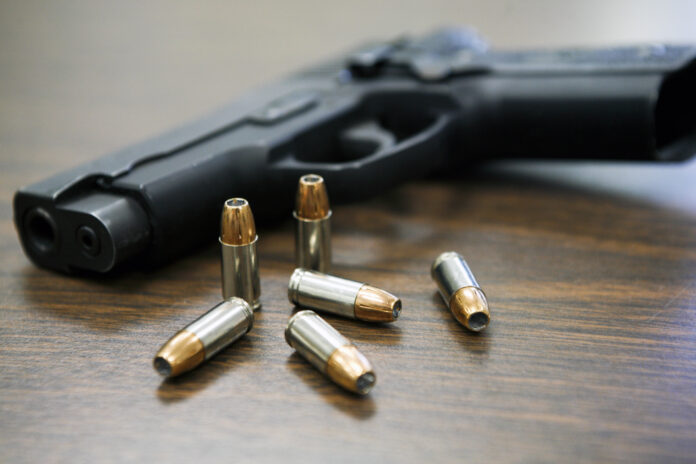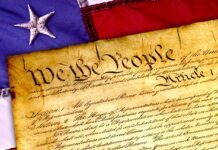This article has been written by Ayush Tiwari, a student at Symbiosis Law School, NOIDA. This article aims to discuss the history and the legislation that dealt with gun violence in the US, a detailed analysis of the ban, the impact of the ban on the gun culture, and how the newer laws should be framed.
it has been published by Rachit Garg.
Introduction
Mass shootings in public places are a serious public health issue that needs ongoing systematic observation to evaluate and guide gun injury prevention initiatives. The necessity of action to avert mass shootings in public places is widely acknowledged, but opinions on the specific actions that should be taken, such as banning assault weapons and high-capacity magazines, are divided. Between 1968 and 2017, there were 1.5 million deaths caused by gun violence, which is more than the number of US soldiers killed in all conflicts since the American War Independence in 1775.
The number of Americans who died by suicide or homicide with a gun in 2020 alone was more than in any other year on record. The number is up 43% from 2010 and 25% more than it was five years ago. However, it is a very political subject that pits proponents of gun control against groups of people who are strongly defending their constitutionally guaranteed right to keep and carry guns. American President, Joe Biden, has reiterated his stance many times in his public speeches for a ban on assault weapons. President Joe Biden, who as a senator in 1994 played a key role in securing the first semi-automatic weapons ban. His administration declared that assault weapons and large-capacity magazines would save lives and added that during the ten years the ban was in effect, the number of mass shootings decreased. The United States is set to pass new legislation on the ban of assault weapons that will be similar to the 1994 legislation known as the “Public Safety and Recreational Firearms Use Protection Act, 1994.”
This article will help you understand the 1994 ban on assault weapons in the US, its impact, and why it was not continued.
History of guns and laws regulating them in the US
The United States’ deeply ingrained gun culture is the main impediment to widespread gun regulation in the Nation. In the country’s early history, weapons gave people power, and the association between firearms and personal freedom has shaped how Americans see gun usage and gun regulation. In America, owning and using firearms are associated with an idealized history of resistance to the despotic British Crown. Guns were required to settle the wide, unpopulated countryside after independence. As a result, owning a gun was intimately linked to patriotism. Both then and now, possessing and using a gun is a representation of independence for many American gun owners. Since the country’s founding, self-defense has been a core cultural value.
To escape the control of a repressive monarchy that did not have their best interests in mind, American colonists sought to secede from British dominion. The American colonists won that battle by defending their intended liberty with the might of their rifles.
It is essential to remember that not all American gun owners share this trait. Some people just possess weapons for self-defense, while others also use them for hunting, collecting, ranching, amongst a variety of other activities. While many gun owners respect their constitutional right to bear arms, there are many individuals who support some form of gun control. The discourse employed by American gun rights activists is shaped by the deeply ingrained links that exist between firearms and personal freedom and self-defense, as well as by the constitutional authorization of firearm ownership. The laws governing guns previously mentioned were all state-level laws, but in the 1930s, the federal government’s involvement in gun control increased. The United States’ first federal gun control law was the National Firearms Act of 1934. This Bill put a significant tax on the production and sale of guns that were thought to be particularly dangerous, based on the taxing and spending power of Congress. Most individuals were discouraged from purchasing these weapons by the hefty taxes alone. The threat of “gangster” firearms was virtually eliminated since those who were not deterred by the cost were frequently jailed for failing to comply with the registration procedures. Because the National Firearms Act was promoted as an effort to curtail the violent crimes affecting the nation, it had overwhelming national support, even from the National Rifle Association.
The percentage of fatalities in mass shootings when an assault rifle was used was lower before the year 1981. However, the number of fatalities from mass shootings was growing at the time. Indeed, a drive for a ban on particular gun types was sparked by high-profile mass shootings utilizing assault weapons, such as the 1989 murder of five children in Stockton, California, and the 1993 attack on an office building in San Francisco that resulted in the deaths of eight people. Since 1934, there have been several pieces of national legislation that have either tightened or eased gun control, but the Assault Weapons Ban of 1994 was the most important. The 1994 Federal Assault Weapons Ban, also known as the Public Safety and Recreational Firearms Act, was enacted by Congress as part of the Violent Crime Control and Law Enforcement Act of 1994.
The Federal Assault Weapons Ban 1994
In 1994, the federal government banned military-style semi-automatic rifles and ammunition-feeding mechanisms that held more than 10 rounds of ammunition. The goal of this law, which is also known as the Federal Assault Weapons Ban, was to decrease the number of people who suffer critical injuries from guns by reducing the number of semi-automatic weapons available in the country that have attributes that make them suitable for criminal use. The fierce debate over the measure reflected the country’s larger political differences on the subject of gun regulation. Congress let the ban expire ten years later. Recent times have seen an increase in requests for a fresh look at the assault weapons debate. A number of mass shooting occurrences employing previously outlawed weapons or magazines have stoked this discussion.
For example, since 2007, at least 11 incidents have occurred in which criminals used assault rifles or other semi-automatic weapons with magazines larger than 10 rounds to injure or murder eight or more people. The most well-known of these incidents include the following:
- A 2007 shooting at Virginia Tech that left 33 people dead and 17 others injured.
- Another shooting in 2011 in a parking lot in Arizona that left 6 people dead and 13 others injured, including Congresswoman Gabrielle Giffords.
- Another 2012 shooting in Aurora, Colorado, movie theater that left 12 people dead and 58 others wounded.
- Most recently, a shooting in a Newtown, Connecticut, elementary school that left 26 people dead, 20 of whom were children.
Due to multiple exclusions and loopholes in the legislation, the prohibition had mixed results in terms of curbing crime using prohibited weapons. The limitation on ammunition magazines carrying more than 10 rounds was undoubtedly the most crucial component of the ban.
What is an assault weapon
To gain a better understanding of the subject, let us first define an assault weapon. In general, an “assault weapon” is a military-style weapon with a selector switch that can provide either semi-automatic, i.e., the firearm discharges one round, then loads a new one, each time the trigger is pulled until the magazine is empty, or fully automatic, i.e., there is a continuous discharge of rounds while the trigger is depressed until all rounds are discharged. This is the definition of an assault weapon given in federal legislation. The term “machinegun” refers to any weapon that discharges automatically more than one shot without manual reloading with a single function of the trigger. Semiautomatic guns, including assault weapons, are prohibited if they are “introduced with just semiautomatic firing capability.”
Provisions under the Act
Title XI, Subtitle A, of the Violent Crime Control and Law Enforcement Act of 1994, enacted on September 13, 1994, put a ten-year prohibition on the “production, transfer, and ownership” of certain semi-automatic rifles categorized as assault weapons. The assault weapon ban was not applicable to all semi-automatic weapons; rather, it targeted semi-automatic weapons with capabilities that appeared to be beneficial for military and criminal purposes but were inappropriate for target shooting or self-defense. Pistol grips on a rifle, flash hiders, folding rifle stocks, threaded barrels for attaching silencers, and the capacity to take ammunition magazines storing a significant number of rounds are examples of such characteristics.
The law expressly barred 18 particular types and modifications, as well as revolving cylinder shotguns. This list contained a number of foreign guns that the federal government has prohibited from being imported into the nation since 1989. Furthermore, the prohibition included a generic “features test” clause that outlawed additional semi-automatic guns with two or more military-style characteristics. The Bureau of Alcohol, Tobacco, Firearms, and Explosives (ATF) discovered 118 model and caliber variants that fit the ban’s assault weapon criteria. The legislation also prohibited “copies or duplicates” of the listed guns, but federal officials emphasized exact replicas of the prohibited guns. In this respect, the law is arguably best viewed as a regulation that prohibits weapon attachments rather than a gun prohibition. Several gun manufacturers began producing modified, legal copies of the prohibited firearms, albeit not all of these alternative weapons were as popular as the prohibited versions.
Other than the kind of firing mechanism, ammunition discharged, and ability to receive a detachable magazine, the prohibited assault weapons were identical to other permitted semi-automatic weapons.
Ban on large-capacity magazines
The federal assault weapon ban also included a restriction on most ammunition-feeding mechanisms that held more than 10 rounds of ammo (referred to as “large capacity magazines”).
For two reasons, the ban on large-capacity magazines was likely the most crucial component of the assault weapons legislation. First and foremost, a large-capacity magazine is the most significant functional element of an assault weapon-type handgun. According to the United States House of Representatives, most outlawed assault weapons came with magazines carrying 30 rounds and could take magazines holding 50 or 100 shots (United States Department of the Treasury, 1998). By removing large-capacity magazines from these guns, their firepower is considerably reduced.
Second, the large-capacity magazine ban had a considerably greater reach than the assault weapon ban since many semi-automatics that were not prohibited by the assault weapon provision could take large-capacity magazines. Prior to the ban, around 40% of semi-automatic pistol models and the bulk of semi-automatic rifle types that were made and promoted were sold with large capacity magazines or had a version that was offered with a large capacity magazine. Others may accept large-capacity magazines designed for different weapons and/or manufactured by other companies. According to a 1994 nationwide poll of gun owners, 18% of all civilian-owned weapons and 21% of civilian-owned pistols had magazines with 10 or more rounds.
Most large-capacity magazine-compatible weapons were unaffected by the assault weapon requirement, but the large-capacity magazine provision limited the capacity of their magazines to 10 rounds. The assault weapon prohibition also included significant exceptions. Assault weapons and large capacity magazines built prior to the ban’s effective date were “grandfathered” (exempted), making them legal to own and transfer. Though estimates vary, it is believed that there were around 1.5 million privately owned assault weapons in the United States when the prohibition went into effect.
Impact of the Federal Assault Weapon Ban
The impact of the ban on assault weapons and large-capacity magazine crimes
Although there was a surge in the production of assault-type weapons as Congress debated the ban in 1994, the law’s restriction of new assault weapon supply, as well as the interest of collectors and speculators in these weapons, helped to drive prices higher for many assault weapons (particularly assault pistols) through the end of the 1990s, making them less accessible and less affordable to criminal users. Analyses of many national and local datasets on firearms seized by police revealed that crime with assault weapons decreased after the prohibition.
The decrease in assault weapon-related crimes was mostly due to a decrease in the use of assault pistols. The assessment of trends in the use of assault weapons was confounded by the rarity of such crimes and, in some cases, the substitution of post-ban firearms that were remarkably similar to the prohibited types. In general, however, the substitution of post-ban assault weapon-type models only partially countered the reduction in assault weapon use. Throughout at least the late 1990s, the drop in assault weapon-related crimes appears to have been compensated by the stable or growing use of other semi-automatics mounted with large capacity magazines and the failure to limit large capacity magazine usage for at least several years following the prohibition. It was most likely due to the enormous stock of exempted pre-ban magazines, which, as previously stated, was augmented by post-ban imports.
The impact of the ban on gun violence
There was no clear justification for expecting the ban to reduce gun assaults and robberies because offenders could replace non-restricted firearms and small magazines with prohibited assault weapons and large capacity magazines. However, by requiring this weapon replacement, the prohibition had the potential to lower the number and severity of shooting deaths and injuries by limiting the number of bullets fired in gun violence.
Only twice during the prohibition were more than ten people murdered in mass shootings, prompting supporters of the ban to assert that it was effective. A deeper examination of the statistics, however, reveals that 17 mass shootings occurred in the United States during the prohibition, killing 100 people and injuring 138 others. From 1982 to 1993, there was just one less gunshot, a 31% drop in deaths, and a 15.85% decrease in injuries.
The Columbine High School tragedy was one of 17 mass shootings that happened under prohibition. The TEC-9, which could fire 36 bullets without reloading and was banned by the 1994 assault weapon ban, was used in this incident. The use of the TEC-9 contributed to the shooting’s devastating damage, which resulted in 15 deaths and 20 injuries. This incident proved that even firearms forbidden by the 1994 assault weapon ban were still available to those with the desire to conduct violent crimes, demonstrating the ban’s ineffectiveness.
The 1994 assault weapon ban: A path for newer legislations
Studies of America’s prior assault weapons prohibition offer a variety of insights that might be applied to future policies. New legislation identical to the old ban will have little effect on most gun crimes, but it may prevent certain shootings, especially those involving a large number of shots and victims. It may therefore contribute to a reduction in the number and intensity of mass shooting occurrences, as well as a slight drop in total shootings.
The prohibition on large-capacity ammunition magazines was the most crucial aspect of the earlier ban. A magazine is likely the most important aspect of an assault rifle, so the limitations on the capacity of the magazine have the potential to affect much more gun crimes than restrictions on military-style weapons.
The way forward
Suggestions for the new regulation
Definition of the banned weapons
A law enacting a federal prohibition must provide explicit descriptions of prohibited weapons in its statutory language to avoid any unfavorable interpretations. Because the purpose of such a prohibition is to prevent mass shootings, the specified weapons should, at the very least, be those used in the country’s deadliest occurrences. A new law should prioritize lightweight polymer semi-automatic weapons with large capacity magazines, or the ability to accept such modifications, similar to the assault weapon ban. The prohibition should be more detailed than the assault weapons ban of 1994. Because the AR-15 is a weapon regularly used in mass shootings, the weight restriction might be dictated by its weight. This criteria goes beyond decorative elements and focuses on the design components and mechanics that make firearms lethal in the context of mass shootings, as each attribute contributes to a weapon’s lethality. The ban targets ‘rifles’ because they have been used in some of the biggest mass shootings in recent years. This method would also address the issue of copycat shooters since it would eliminate the weapons typically used in mass shootings, giving the media little reason to focus on these especially lethal weapons.
The prohibition should expressly include weapons like the AR-15, which are disproportionately popular in mass shootings in the United States. Previous state law challenges demonstrate that such a prohibition would pass the constitutional tests. The argument that these firearms, particularly the AR-15, are military weapons not often used for civil purposes has had a lot of success in court. As such, if a court determines that these guns are protected by the Second Amendment, the prohibition would be upheld under the intermediate scrutiny level of review since prohibiting such weapons serves the state’s interest in ensuring public safety.
Following these rules would result in a prohibition that is detailed enough to prevent gun makers from altering its terms. Furthermore, under overly broad definitions, ordinary firearms that are not disproportionately used in mass shootings would not be prohibited. At the same time, such a rule would be broad enough to combat mass shootings by outlawing the weapons most commonly used in such incidents.
A sunset provision
The legislation must not include a sunset provision, which causes the bill to expire after a certain time. Although the assault weapon ban was effective while it was in force, any gain toward avoiding mass shootings was rapidly reversed after the law expired. If a new prohibition is to have any chance of reducing mass shootings in the United States, it must be permanent. The American gun culture is too powerful to entirely transform in a ten-year period. To fully prevent mass shootings, the United States requires a ban that really works within the framework of American gun culture by keeping the ban in place for the long term, rather than hoping that adherents to American gun culture will lose interest in these weapons after ten years without them.
The sunset clause in the original assault weapon ban was added as a compromise to secure enough votes for the bill to succeed, but it is critical that future politicians do not make a similar concession. State bans without such safeguards have been shown to be effective in reducing gun violence.
Thus, including a sunset provision can be damaging to the effectiveness of a future ban.
Buyback program
It is critical to execute a buyback scheme rather than include a grandfather clause in the new prohibition. A grandfather provision would contradict the objective of the law because people who desire to perpetrate mass shootings with these weapons would still be able to do so.
For example, ATF may be the proper agency to manage a federal assault weapons buyback program. ATF should manage the program through its field offices around the country to make it more accessible to participants and to allow willing local governments to contribute the required resources. Federal agents would have to operate the program to prevent the appropriation of state resources. Without adequate means for tracking the number of weapons in the country and who owns them, the federal government would have to rely on the public to follow the new prohibition. However, given the high value that Americans place on firearms, many people are unlikely to comply. To discourage noncompliance, the government should offer a tax cut to individuals who engage in the buyback scheme.
Under this strategy, there is no Takings Clause issue requiring compensation because these weapons disproportionately contribute to the deadliest mass shootings in the United States, and prohibiting them will avoid such tragedies, benefiting public safety. To encourage participation, the federal government should pay a reasonable market price for the prohibited firearms.
Policymakers should keep in mind, however, that if new legislation exempts the current stock, it might take several years to achieve significant reductions in crimes with prohibited weapons and/or magazines. Exemption policies must also specifically address the status of imported firearms and magazines. Previous history implies that public discussion over restoring the ban or enacting a new one will raise costs and reduce the manufacturing of the firearms and magazines that are likely to be affected, temporarily saturating the market. A new prohibition on assault weapons and/or large-capacity magazines will not solve America’s gun violence issue, nor will it prevent all mass shootings.
Conclusion
The 1994 assault weapon ban was enacted with the goal of lowering the frequency and severity of mass shootings in the United States. Due to various loopholes and faults, the prohibition was unable to achieve its objectives. Among these were the grandfathering of firearms and large capacity magazines manufactured prior to the ban’s adoption, as well as the exclusion of almost 650 gun variants. The simplicity with which models identical to prohibited models could be produced, as well as the fact that only a small number of crimes were perpetrated using assault weapons prior to the prohibition, were both fundamental flaws in the legislation. But mass shootings have increased since the ban was lifted. In the US, the State Government come up with the laws, and the federal government fails to adopt significant gun control legislation. The United States is one of the world’s most powerful and influential countries, yet its approach to weapons is considered something to avoid rather than embrace. That stigma does not have to be a permanent part of American identity. While preserving the independence and individualism that are so highly cherished in American society, the US federal government may do more than offer thoughts and prayers.
A new assault weapon ban is being enacted by the US, and there are a lot of expectations from the ban. The Biden Government is showing that they have learned from the past mistakes of the 1994 ban and have defined the term “assault weapons” and its attachments in detail. But will it help the country rise above the gun culture present in the US? This is a question that every person has.
References
- https://www.jstor.org/stable/23366709
- https://www.ojp.gov/pdffiles1/173405.pdf
- https://www.ncbi.nlm.nih.gov/pmc/articles/PMC8103291/
- https://www.theguardian.com/us-news/2022/jul/29/us-house-assault-weapons-ban-bill-senate
- https://newhampshirebulletin.com/2022/06/10/did-the-assault-weapons-ban-of-1994-bring-down-mass-shootings-commentary/
Students of Lawsikho courses regularly produce writing assignments and work on practical exercises as a part of their coursework and develop themselves in real-life practical skills.
LawSikho has created a telegram group for exchanging legal knowledge, referrals, and various opportunities. You can click on this link and join:
Follow us on Instagram and subscribe to our YouTube channel for more amazing legal content.







